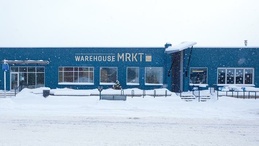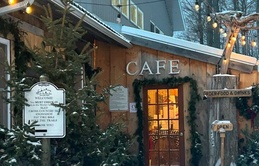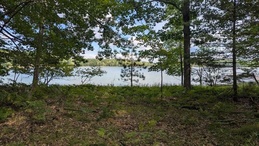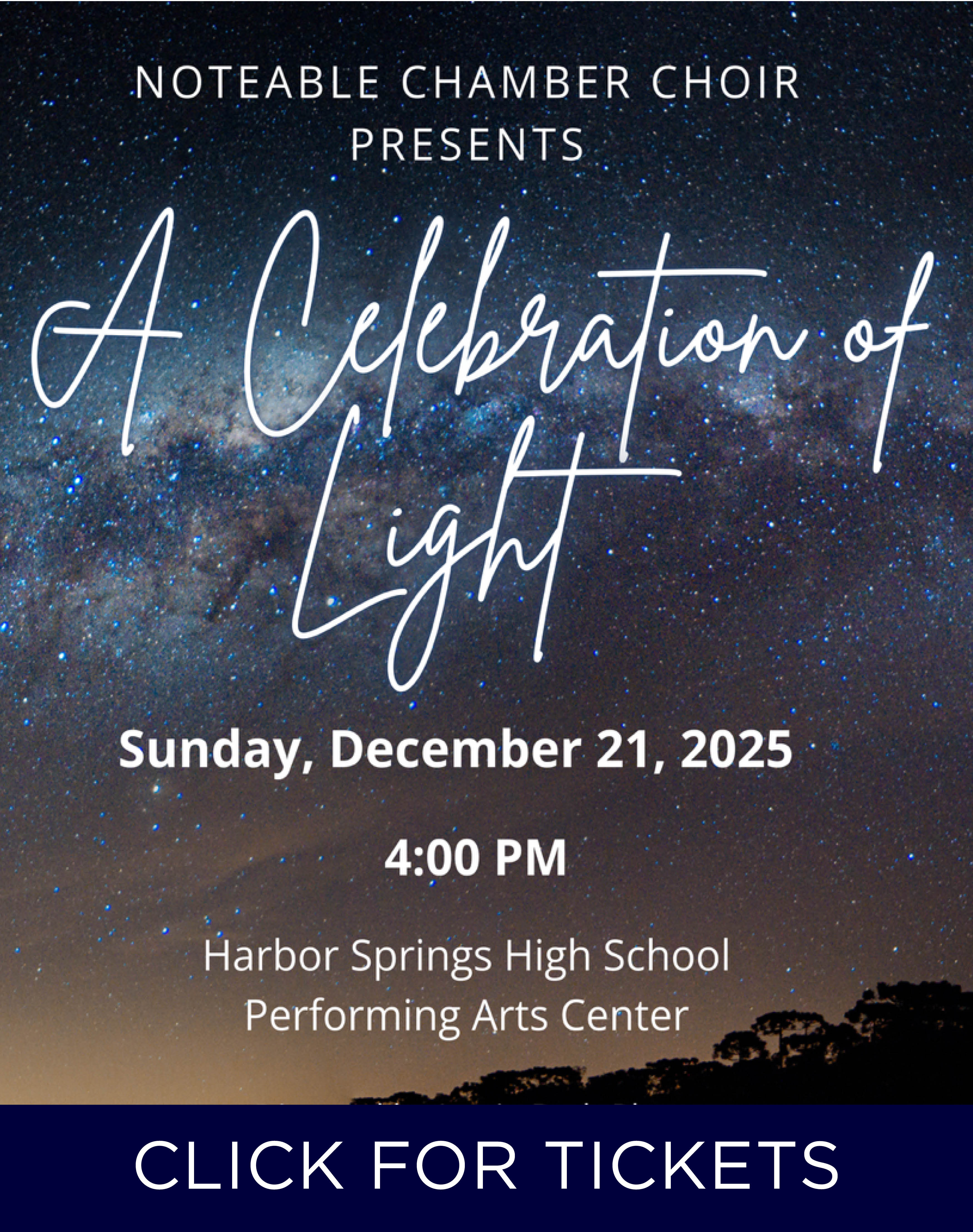Museums Offer Window to Past
Nov. 27, 2015

Michigan history is all around us. Even seemingly forgotten places boast of past significance. Hidden gems, like a stone monument near the north end of Elk Lake comprised of stones from each of Michigan’s counties, pepper the landscape like lost treasures.
While these unique landmarks are worthy of attention, what about the daily lives of those who came before us? Thanks to local history buffs, we can catch an intriguing glimpse into the logging industry, old-time school days or entire towns whose heydays have come and gone.
Here are 10 museums that offer visitors a view of days gone by. These intriguing testaments to the past are filled with memorabilia that resonates with anyone interested in our region’s history. Just be sure to check the hours. Many are open only during summer or have limited winter hours.
Almira Historical Museum
19440 Maple Street, Lake Ann
almirahistoricalsociety.org
Housed within a complex of several buildings, the museum’s goal is preserving the history of Almira Township and the village of Lake Ann. Vera Carmien, president of the Almira Historical Society board, calls it a village within a village. The complex includes a fire barn (housing the township’s second fire truck, a 1946 International model) and the partially renovated home of the town’s first Methodist minister.
The museum also includes a collection of Texaco memorabilia, including two gas pumps; the old village switchboard; what Carmien calls “a wonderful recognition of area veterans”; and logging displays dating back to the village’s beginnings as a mill town.
Arcadia Historical Museum
3340 Lake Street, Arcadia
arcadiami.com or (231) 889-4360
A marine contractor from Milwaukee opened a sawmill here and a town soon grew up around it. When it burned in 1906, instead of rebuilding the mill, the contractor built a furniture factory. Some of the furniture is in the museum’s collection and photos, catalogs and more are on the museum’s website.
Displays honor such notables as Harriet Quimby, an Arcadia native who became the first American woman to receive a pilot license and the first woman to fly across the English channel; the railroad which ran from Arcadia to Copemish; Arcadia Schools; shipping and shipwrecks around Arcadia; and various area baseball teams. Baseball was Arcadia’s sport and the home team even played a game against the Illinois Giants, featuring future Negro League legend Ted “Double Duty” Radcliffe.
The museum is located in a Victorian home originally built overlooking Lake Michigan in 1884 by lumber baron Howard Gilbert. It was later moved to its current location on Lake Street.
Benzie Area Historical Museum
6941 Traverse Avenue, Benzonia
benziemuseum.org or (231) 882-5539
Benzonia was founded as a Congregationalist religious colony with the vision of establishing a college. The museum features displays of this history, as well as of historian and author Bruce Catton. The son of a Congregationalist minister, the Pulitzer Prize-winner was raised in Benzonia and later summered in Frankfort, where he died in 1978. He was most well known for his scholarship about the Civil War.
The museum also includes an exhibit about the Ann Arbor Car Ferry that ran from Frankfort, to the resorts and summer cottages of Kewaunee, Wis.
The museum hosts numerous events and lectures, including an upcoming program entitled “The Evolution of Santa Claus” by museum director Dr. Louis Yock.
It’s housed in a former Congregational church building. The Historical Society also owns and operates the Drake School at the intersection of Fowler Road and Valley Road.
Charlevoix Historical Society
103 State Street, Charlevoix
chxhistory.com or (231) 547-0373
The Charlevoix Historical Society is one of the oldest such organizations in the area, founded in 1879. It lay dormant in the middle of the last century before it was revived in 1972. Today it operates the South Pier Lighthouse, the Charlevoix Depot Museum and the Harsha House Museum.
The latter includes what curator David Miles calls “one of our treasures,” the original marriage license of Ernest Hemingway and his first wife, Hadley Richardson. It also includes three historical Victorian parlors, a fully furnished Victorian dollhouse and a working player piano and reed organ.
Another gem is the 3½ power Fresnel lens from Gray’s Reef Light off Beaver Island.
“Journeying to Charlevoix” is a large, comprehensive display of the settlement of Charlevoix from the 1850s through the end of the 19th century. It highlights common modes of transportation and the various occupations of the townspeople.
East Jordan Portside Art and Historical Museum
1656 South M-66, East Jordan
portsideartsfair.org or (231) 536-3282
What was the first historical museum in Charlevoix County? It wasn’t actually in the village of Charlevoix, though their historical society dates from the 19th century. It was the East Jordan Art and Historical Museum, which is housed today in the lodge at Elm Pointe, the historic building that was designated a museum in 1976.
Vistors can view the National Smelt Kings, crowned during the annual Smelt Jamboree held from 1933 to 1940, one of the only local festivals to crown a king rather than a queen. The winner donned a robe with aluminum fish scales, also on display.
The museum also nods to the lumber industry, the area’s agricultural past and its military associations, including a tribute to the Polar Bears, a contingent of roughly 5,000 U.S. Army troops that fought the Red Army in Russia from September 1918 through July 1919. The troops hailed from Fort Custer in Battle Creek, Mich.
At the downtown location, patrons enter through city hall to take a self-guided tour.
Elk Rapids Historical Museum
301 Traverse Street, Elk Rapids
elkrapidshistory.org or (231) 264-5692
You’d better behave while you’re visiting the museum in Elk Rapids or you’ll end up behind bars. Actually, naughty or nice, you can be detained, as one of the displays is the village’s 1883 jail.
The museum showcases exhibits from the old Elk Rapids iron works, vintage clothing, antique tools, local artist displays, old office furniture and machines, photographs, paperwork and books.
Like many historical societies, it also offers genealogical archives and even has a genealogical consultant. Lin Meeker has decades of experience with family history research, computer genealogical databases and photography.
The museum served as the Elk Rapids United Methodist church from 1901 to 2011 and is home to several beautiful and dramatic stained glass windows, adding to the ambience.
Empire Area Museum
11544 Lacore Street, just off M-22, Empire
empiremuseum.org or (231) 326-5568
The Empire Area Museum has grown, moved, and grown some more during its 42 years, from the old Methodist church to the Empire hose house (fire hall) to a new building in 1987. A former church/school was moved to the property in 1989, followed by a barn built in 1990. The old hose house was eventually moved to the site in 1995.
The increased space allows the museum to host events and exhibits ranging from military uniforms and regalia to equipment used by area industry and farmers, and even a stage coach.
The interior features the Roen Saloon, a completely refurbished replica of the Empire tavern that operated from 1895 to 1925. It includes an 18-foot cherry wood bar, fixtures, a music box, Edison phonograph and even a player piano.
The blacksmith shop downstairs features many items from two former blacksmith operations in Empire, while other displays serve as homage to the Empire Lumber Company, railroad and shipping items, artifacts from Norway Town and an old-time gas station.

Fife Lake Area Historical Museum
136 East State Street, Fife Lake
fifelakehistoricalsociety.com
The Fife Lake Area Historical Museum is one of three venues showcasing the area’s history, including a schoolhouse dating from 1878 and a fire barn from the early 1900s.
There is a large display showcasing military artifacts, with photos, gear and clothing, as well as Native American history and, of course, the logging industry. A kitchen mockup, living room/ parlor and grocery store are also of interest.
One of the museum’s biggest draws is its genealogy section. Patrons are welcome to do their own research in the archives.
Each year local fourth-graders spend a day experiencing the life of an 1880s student, learning the customs of the time, participating in a spelling bee, reciting their lessons and (hopefully) staying clear of the dunce chair.
Inland Water Route Historical Society Museum
6217 River Street, Alanson
iwrhs.wordpress.com or (231) 557-2205
As its lengthy name suggests, the museum is focused on the waterway that connects Lake Michigan and Lake Huron by a series of rivers, creeks and lakes, including Round Lake, Iduna Creek, Crooked Lake, Crooked River, Indian River, Mullet Lake and the Cheboygan River. It passes through, or near, several communities, including Conway, Oden, Ponshewaing, Alanson, Indian River, Topinabee and Cheboygan.
The museum houses a number of artifacts from a time when water travel was the preferred — and sometimes only — means of travel through the area.
“It was popular for people to take the train into and out of Petoskey, then do horse and wagon to Crooked Lake,” said Wayne Blomberg, member of the Inland Water Route Historical Society.
“Then they would catch a steamer to various points north. A popular trip was to go to Topinabee for lunch. Destinations to Cheboygan were usually overnight trips.”
Most personal watercraft were rowboats; the only power boats were the steamers, which often reached 70 to 75 feet in length. The museum includes a number of items of the era, including a large anchor and a four-foot propeller. Imagine a 70-foot craft with a propeller that size navigating the tight turns that gave the Crooked River its name.
The museum also includes historical information and displays on the various communities along the waterway, as well as logging, railroads and lodging.

Pine River Heritage Museum
107 Howard Street, Tustin
Located near the White Pine Trail (itself a holdover from the old railroad), Tustin’s Pine River Museum focuses particularly on the importance of the railroad in settling the region.
“In 1860, the census said Osceola County had 27 people. The railroad was completed in 1871 and the 1880 census showed a population of 11,000,” said Glen VanAntwerp, member of the Pine River Area Historical Society.
The museum houses everything from farm equipment and typewriters to laundry implements.
“We try to tie in the history of the area to emphasize two-and-a-quarter centuries of rapid technical innovation,” he said.
It must be working, as he explained one of his proudest moments came when two teens suggested future visitors would say, “Look, there’s an iPad 10. Isn’t that quaint?” The museum also displays a 36-star U.S. flag from the Civil War era, when Nevada joined the union as the 36th state.
Van Antwerp said the region was one of the largest potato-growing areas in the country.
“We had huge numbers [of potatoes], trainloads, before the Grand Coulee Dam and the potato-ization of the West.”
Fittingly, the museum is housed in a 100-year-old potato warehouse.
Trending

Farm to Glass with Ethanology
When Elk Rapids distillery Ethanology committed to locally-sourced ingredients for their products, it seemed like they&rsquo… Read More >>
MRKT HLDY SHPPNG, aka Warehouse MRKT Holiday Shopping!
Shop the latest from local makers and vendors at the Holiday MRKT Share at Warehouse MRKT in TC, Saturday, Dec. 20, from 10a… Read More >>
Men and Ugly Sweaters
Those two things don’t always go together, but on Dec. 19, you’ll see both out and about in Petoskey and Harbor … Read More >>


